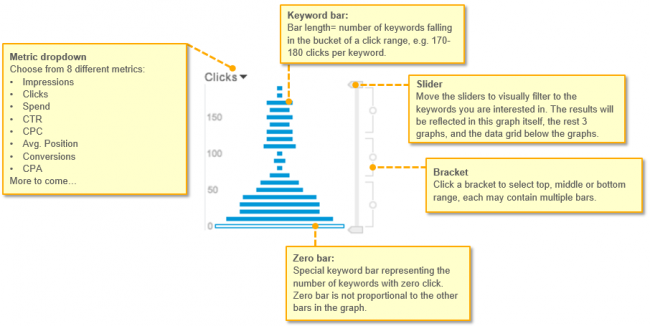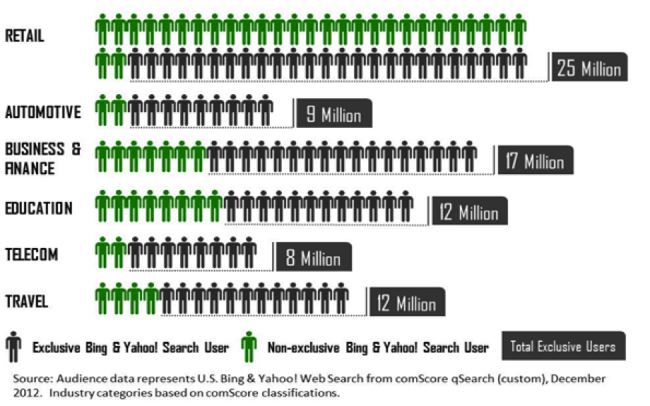Taking a Closer Look at Bing Ads – SEMPO Search Summit 2013
by Admin
21 May
by Marta Turek
by Marta Turek
http://www.mediative.ca
On May 14th, Bing & SEMPO jointly hosted the second annual SEMPO Canada Search Summit. Topics included social media and search marketing, mobile search, Bing Ads product improvements, analytics, reporting, SEO audits & measuring SEO metrics. Mediative presented a controversial topic in comparing elements of Bing Ads vs. Google AdWords. Suffice it to say, the presentation was well received, even by Bing Ads representatives present on the day.
http://www.mediative.ca
On May 14th, Bing & SEMPO jointly hosted the second annual SEMPO Canada Search Summit. Topics included social media and search marketing, mobile search, Bing Ads product improvements, analytics, reporting, SEO audits & measuring SEO metrics. Mediative presented a controversial topic in comparing elements of Bing Ads vs. Google AdWords. Suffice it to say, the presentation was well received, even by Bing Ads representatives present on the day.
Zoom in on Bing Ads
In this roundup of the event, we will focus on Bing Ads. If you haven’t noticed, Bing Ads has been in the news a great deal of late and more importantly, the news has focused on a ton of new feature updates that Bing Ads has made. As Paul Corkery and Andrew Yang of Bing Ads mentioned on the day, developers are making platform improvements monthly, from what used to happen roughly quarterly.
From in-line search term reporting, new sitelink & ad positioning reporting and a new ad diagnostics tool, there are many new features to get you excited about Bing Ads. Of all the feature updates being made, possibly the most exciting is the new Bing Ads keyword distribution graph functionality (pictured below).

This new tool facilitates metrics driven keyword management within the interface. It allows you to visualize your entire keyword set based on performance metrics that you define. The size of the bar represents the number of keywords in the bucket.
You can create keyword criteria according to up to four different metrics and then analyze the performance of those keywords. The visual representation allows you to dig in and dive into the outliers, low performance, low hanging fruit and make quick decisions, without pulling all this data into a spreadsheet to perform your analysis there.

This could prove to be a very handy feature for campaign managers! When will it be released? We don’t know, Bing wouldn’t tell us. We’ll have to wait with baited breath!
Bing Ads vs. Google AdWords
Even Bing is actively comparing itself to Google in the Bing It On Challenge – reminiscent of the Coke vs. Pepsi blind taste tests back in the day. When it comes to advertising on the search engines; until recently, the great majority of search marketing practitioners would tell you that you should first maximize Google before you shift any budget to Bing Ads. This thinking is beginning to shift, as Bing Ads is slowly shaking off the stigma of simply being ‘the other’ search engine.
Studies and data is coming out to support that Bing Ads does have its own 45 million strong unique audience (comScore image below) and that there is a distinct competitive advantage advertising on Bing Ads in specific verticals. Hands down, Bing continues to offer cheaper average CPCs in a less saturated market place.

Bing Ads has realized that it does not necessarily pay to have a completely different interface from Google. With scarce resources (time and manpower) pervading in the search marketing industry, campaign managers are constantly looking for efficiencies. By making it easier to load account imports directly from Google AdWords, this breaks down the barriers of transition regarding campaign build out costs.
An Incremental Advertising Opportunity
Competition between the search engines is good for everyone – from searchers to advertisers, as it keeps the engines on their toes. We are already skating too close to a Google monopoly. It is both risky and costly for businesses to put all their eggs into the Google basket. Bing’s Ads finally appears to be giving both advertisers and campaign managers a convincing reason to diversify.
In a less crowded market place, where average CPCs are consistently lower on average and first SERP exposure is easier to obtain, this is a competitive advantage that marketers should test and leverage. If Bing Ads continues to improve its game at this pace, these cost and competition advantages may have a finite timestamp!
Visit our cheat sheets page to access the latest PPC tips and tricks to optimize your SEM campaigns.
About the Author
Marta is the Group Manager of Performance Media at Mediative, specialising in paid search (PPC) account management. She drives PPC strategy on several key accounts with multi-million dollar investments. She also ensures PPC projects across the company are meeting KPIs and exceeding client expectations, in addition to identifying new opportunities to grow each client’s digital footprint. With a background in marketing and economics, Marta has an intuitive understanding of clients’ business goals and is adept at identifying the strategic foundation of the project, while possessing the technical skills to manage the tactical analysis and execution of PPC campaigns. Having lived in various countries around the world, Marta’s accent is as linguistically dynamic as the many industries in which she has managed PPC campaigns in the B2B landscape.
In this roundup of the event, we will focus on Bing Ads. If you haven’t noticed, Bing Ads has been in the news a great deal of late and more importantly, the news has focused on a ton of new feature updates that Bing Ads has made. As Paul Corkery and Andrew Yang of Bing Ads mentioned on the day, developers are making platform improvements monthly, from what used to happen roughly quarterly.
From in-line search term reporting, new sitelink & ad positioning reporting and a new ad diagnostics tool, there are many new features to get you excited about Bing Ads. Of all the feature updates being made, possibly the most exciting is the new Bing Ads keyword distribution graph functionality (pictured below).

This new tool facilitates metrics driven keyword management within the interface. It allows you to visualize your entire keyword set based on performance metrics that you define. The size of the bar represents the number of keywords in the bucket.
You can create keyword criteria according to up to four different metrics and then analyze the performance of those keywords. The visual representation allows you to dig in and dive into the outliers, low performance, low hanging fruit and make quick decisions, without pulling all this data into a spreadsheet to perform your analysis there.

This could prove to be a very handy feature for campaign managers! When will it be released? We don’t know, Bing wouldn’t tell us. We’ll have to wait with baited breath!
Bing Ads vs. Google AdWords
Even Bing is actively comparing itself to Google in the Bing It On Challenge – reminiscent of the Coke vs. Pepsi blind taste tests back in the day. When it comes to advertising on the search engines; until recently, the great majority of search marketing practitioners would tell you that you should first maximize Google before you shift any budget to Bing Ads. This thinking is beginning to shift, as Bing Ads is slowly shaking off the stigma of simply being ‘the other’ search engine.
Studies and data is coming out to support that Bing Ads does have its own 45 million strong unique audience (comScore image below) and that there is a distinct competitive advantage advertising on Bing Ads in specific verticals. Hands down, Bing continues to offer cheaper average CPCs in a less saturated market place.

Bing Ads has realized that it does not necessarily pay to have a completely different interface from Google. With scarce resources (time and manpower) pervading in the search marketing industry, campaign managers are constantly looking for efficiencies. By making it easier to load account imports directly from Google AdWords, this breaks down the barriers of transition regarding campaign build out costs.
An Incremental Advertising Opportunity
Competition between the search engines is good for everyone – from searchers to advertisers, as it keeps the engines on their toes. We are already skating too close to a Google monopoly. It is both risky and costly for businesses to put all their eggs into the Google basket. Bing’s Ads finally appears to be giving both advertisers and campaign managers a convincing reason to diversify.
In a less crowded market place, where average CPCs are consistently lower on average and first SERP exposure is easier to obtain, this is a competitive advantage that marketers should test and leverage. If Bing Ads continues to improve its game at this pace, these cost and competition advantages may have a finite timestamp!
Visit our cheat sheets page to access the latest PPC tips and tricks to optimize your SEM campaigns.
About the Author
Marta is the Group Manager of Performance Media at Mediative, specialising in paid search (PPC) account management. She drives PPC strategy on several key accounts with multi-million dollar investments. She also ensures PPC projects across the company are meeting KPIs and exceeding client expectations, in addition to identifying new opportunities to grow each client’s digital footprint. With a background in marketing and economics, Marta has an intuitive understanding of clients’ business goals and is adept at identifying the strategic foundation of the project, while possessing the technical skills to manage the tactical analysis and execution of PPC campaigns. Having lived in various countries around the world, Marta’s accent is as linguistically dynamic as the many industries in which she has managed PPC campaigns in the B2B landscape.
News Categories
|
|
|